Meet the Watchmakers Who Don’t Want to Tell You the Time
Say you want to find out what time it is. You’ll probably check your phone. Or your laptop, if you’ve got it open. Or maybe your desktop, or your tablet. Maybe you have an alarm clock. You get the idea. Because you could also check your watch, if you’re wearing one. But in 2020, you don’t need a watch to know what time it is: for many, timepieces have so transcended this function people don’t even bother to set them (yours truly included). You can buy a timepiece because it’s beautiful, or cool, or a “bust-down,” or historic, or wealth-affirming. Strictly speaking, watches these days are less time-tellers than they are extremely powerful vibe-emanating machines.
And in the face of this identity crisis, several brands have cropped up with a new idea for what a watch should do. HYT, Ressence, and Urwerk argue that, yes, watches can tell us exactly what time it is, but that the most interesting ones should fundamentally refashion our relationship with time itself. In the process, they’re making a case for the watch’s sustained relevance along the way. Get to know the weirdest, most philosophical folks in watch-making.
Get Into the Flow
The signature watch from the brand HYT (each letter is pronounced on its own) is the SOONOW model. The watch’s face features an arrangement of small pegs in the shape of a skull with an open mouth that looks like it's emitting some eternal metallic screech. The eye sockets are cavernous, the left filled with the word SOONOW repeating over and over again. And around the edge of the skull is a tube filled with both a clear and colored liquid that never mix—their meeting place moves around the edge of the skull, corresponding to the current time.
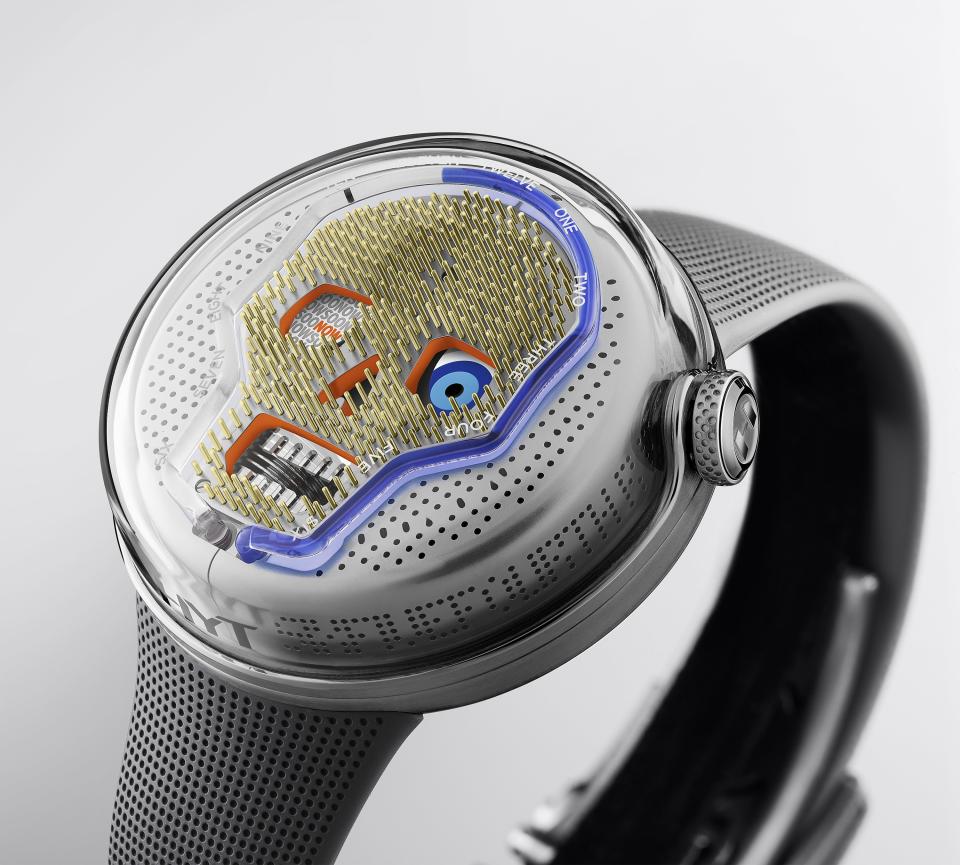
All HYT watches are meant to convey that time is a “constant transformation,” says Gregory Dourde, who took over as the brand’s CEO in 2016. “The future is becoming the present—the now—and the now is disappearing into the past.” The idea is borrowed from the ancient Greek philosopher Heraclitus, who compared life to “a flow of water,” Dourde says. “And no man steps twice on the same river, because it's always changing.”
Dourde will also gladly point out that clepsydras, or water clocks, which tracked time by slowly draining water into a marked vessel, were invented in ancient Greece all the way back in 325 B.C. Hands, with their ability to spin around and point directly at minute and hour markers, were just a function of technology available to watchmakers in the invention’s early days. As technology advanced, hands were largely eliminated from Casios or the new-fangled Apple Watch.
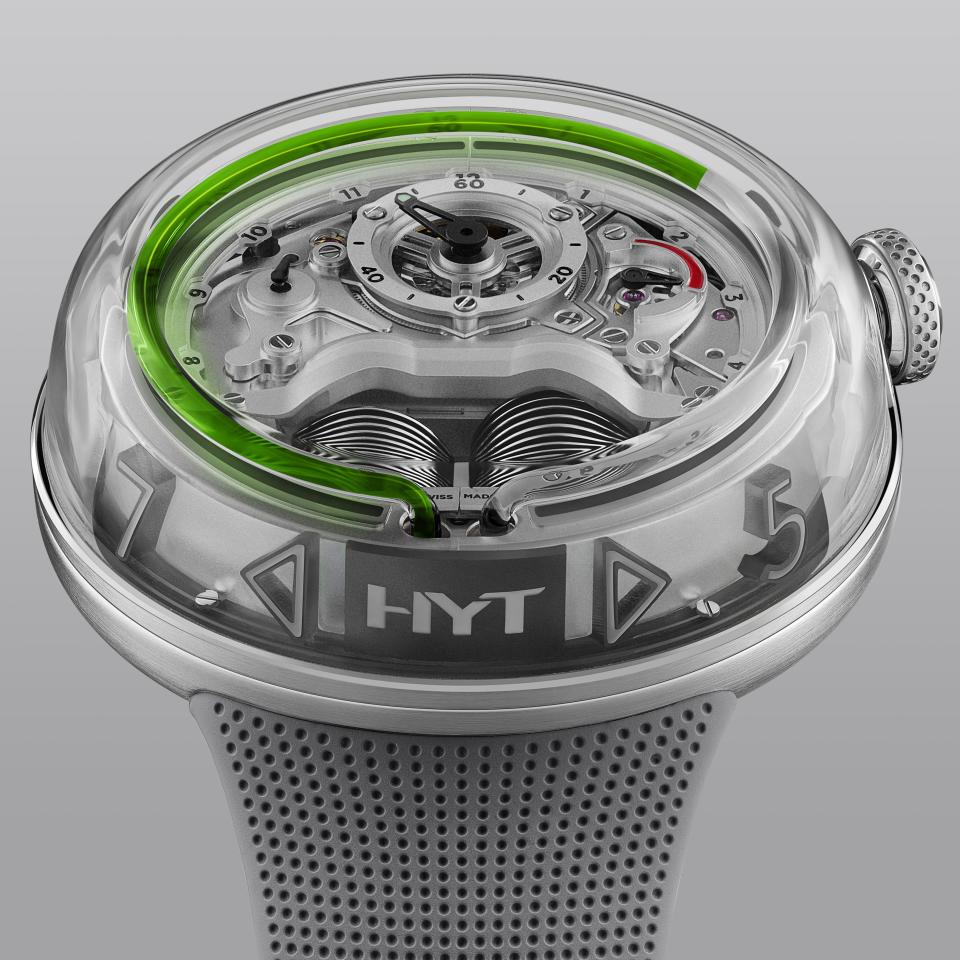
But HYT’s isn’t purely a technological mission. “Much more than timekeepers,” says Dourde, “our watches are time tellers.” What he means is that HYT pieces “do not only give information on what time it is,” he clarifies, but that the watches are meant to serve as visual reminders of the day. The steady crawl of colored liquid—the one that represents the past—always takes over the entire tube. It’s hard not to feel wistful—and a good prompt to quit wasting so much time. Dourde recalls a recent conversation with someone telling time the HYT way who “realized that her day was gone” after seeing the tube of liquid almost completely filled in.
That’s bleak, but HYT’s SOONOW is meant to motivate its wearer. The Halloween-novelty-turned-$95,000-watch takes on a heavier meaning than the brand’s other models, which use this same flow of water to tell time but wrap the tube around lazy river-esque circles. “We know that all we will die one day, fortunately or unfortunately, but this is the essence of life,” says Dourde. “And when you look at the skull it reminds you that there is an urgency to enjoy the present and enjoy the now.”
Big Oil
We don’t need watches, and yet people are buying more of them than ever. Why? Benoît Mintiens, the founder of watch brand Ressence, has an idea.
“If you buy a Rolex, you buy a Rolex,” Mintiens says. “You don't buy a watch.” What he’s getting at is that people don’t buy luxury watches because they need a great timekeeping device. They buy a specific luxury watch—a Rolex, perhaps—because it’s attractive, because it has a history a customer admires, because of the status the brand confers. “I always say that a watch is your avatar,” Mintiens says. “It is a concentrated representation of the values you want to express, right?”
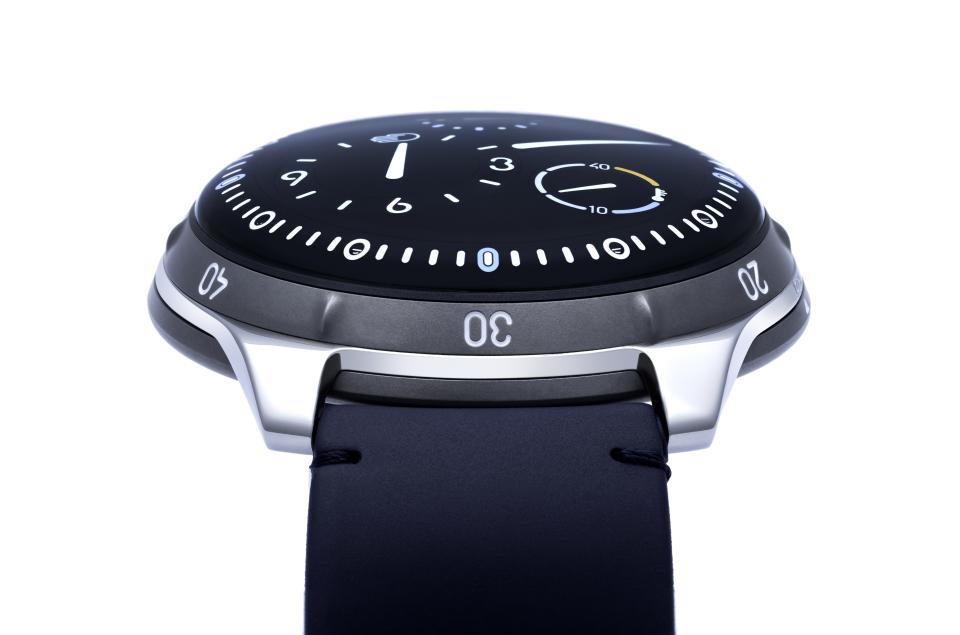
And where the Rolex Submariner is made for divers and the Yacht-Master for...yacht masters, Ressence’s watches are made for the professionally mindful. To understand Ressence’s philosophy, you first have to understand the brand’s watch itself, which features a completely flat dial that rotates completely, taking the etched-on hands along for the ride. The effect is of animation, of a sketch of a watch come to life. Mintiens, an industrial designer, fills the piece with oil to make the look possible.
The idea behind Ressence was to make a watch more natural-looking and legible, inspired by Mintiens’s belief that 2D objects are easier to read than 3D ones. (Imagine if words in a book levitated off the page). In pursuit of that goal, Mintiens wanted to make a watch that felt more “organic.” But the hard lines, 90-degree angles, and the flat dial seen on traditional dials don’t reflect what we see in the natural world. “There's nothing flat in nature,” Mintiens says. So Mintiens split his watch case in two parts, filling the top half with 35 milliliters of oil. The oil swelling up against the glass crystal creates an optical illusion that makes it appear as if the numerals and indices are projected onto a screen. No matter how you feel about Ressence’s watches, they are a marvel to see in action.
That innovation came with an added benefit, though. “I cannot say when I did the first drawing I thought, ‘I want to do something that makes me more conscious about time,’” he adds. The philosophy was baked in later, a sprinkle of sugar on top of a finished cake, Mintiens admits. The seed of the design naturally sprouted into something with a more philosophical edge: “If you have the idea you can spend time as you can spend money,” Mintiens starts, “then time is an asset.” (Later, he’ll tell me that consuming time is actually like consuming food.) But, he argues, the way we spend those minutes and hours is no longer a conscious act. Making the Ressence watch display time efficiently and smoothly is Mintiens’ way of encouraging us to spend our time in similar fashion.
“You cannot sell that,” he says, referring to his organic-first philosophy. “So you have to wrap it in something more beautiful.”
Iron Man-Approved
Urwerk makes science-fiction inspired watches so futuristic that Robert Downey Jr. wore one while playing Tony Stark in Avengers: Endgame. While most Iron Man technology is strictly movie magic, the watch is one you or I could buy from Urwerk, assuming you or I have $69,000 laying around. And the brand behind it comes with a sci-fi pedigree. The brand’s very first piece made in 1997, the UR-101, was inspired in part by the Millennium Falcon. The pieces look strange on purpose, an intentional hard right turn away from what tradition-bound watchmakers have been doing for generations. “A lot of watchmakers, they just repeat the old history of watchmaking,” says Felix Baumgartner, Urwerk’s co-founder. Rather than repeat the tried-and-tested, Baumgartner wants to imagine where watchmaking is going.
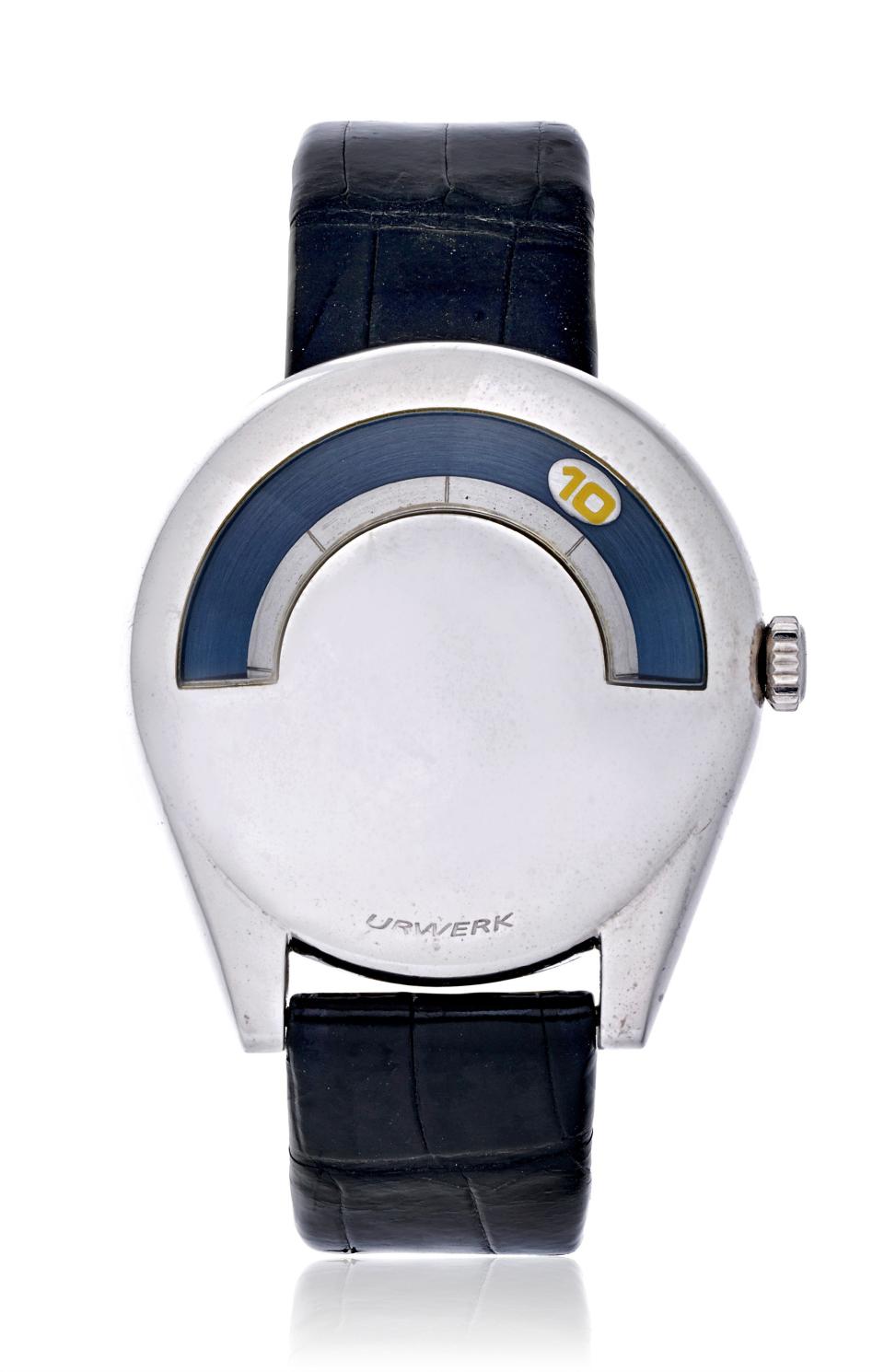
That means designing pieces that share some aesthetic qualities with Han Solo’s trusty aircraft, but also reimagining why we wear watches in the process. “I was not interested to follow the traditional way of just telling with two or three hands the minute the seconds and the hours,” says Baumgartner. In his mind, the development of the quartz watch in the ‘70s rendered that project less interesting.
The Apple Watch was a cute idea: “We need a watch to communicate, to track our health that's, for sure, nice,” he says. But smartphones capably fulfill all those same tasks. “So, for us, what’s important to actually do is create the consciousness so that people become conscious about their time,” Baumgartner says.
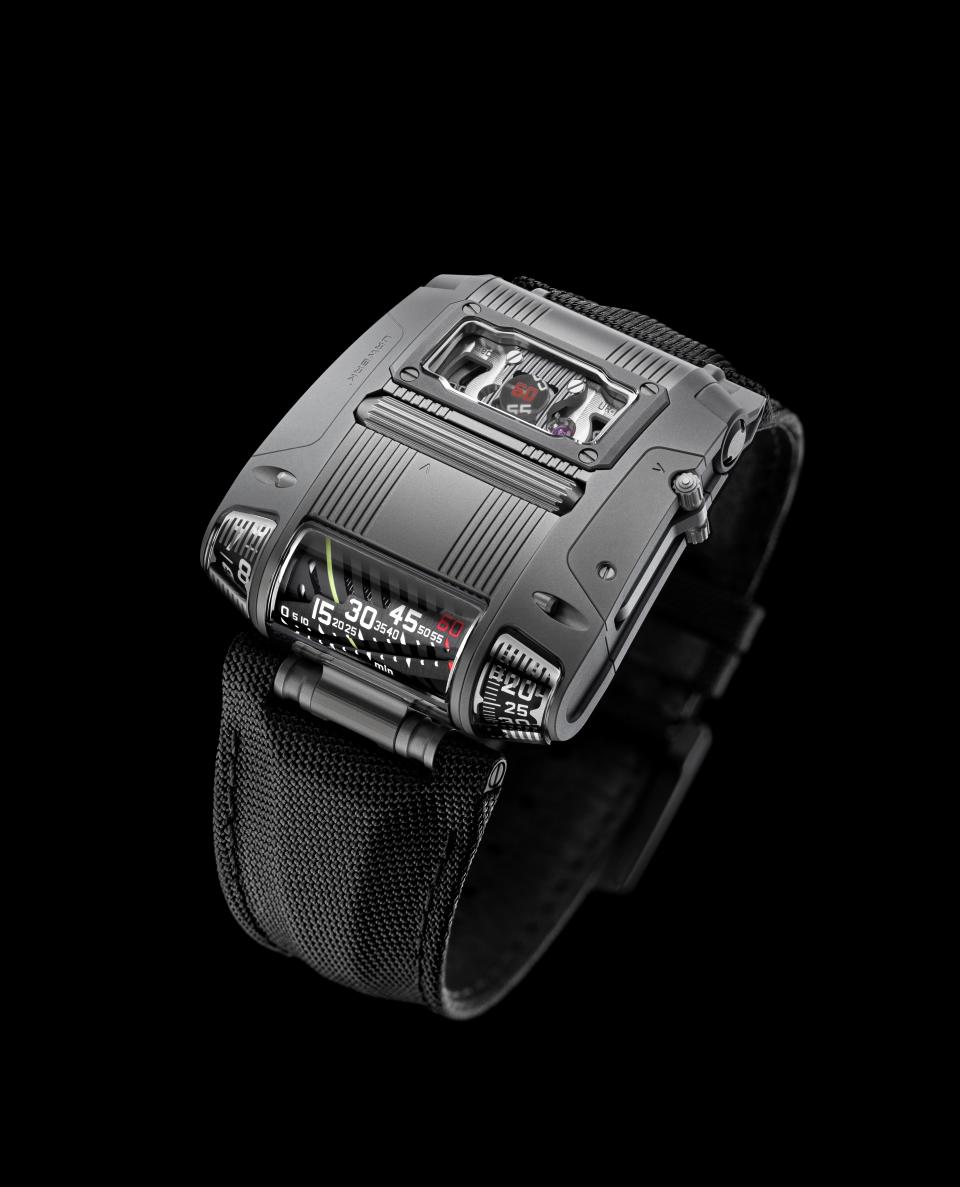
On the Millennium Falcon-inspired 101, the consciousness-altering idea was to reveal only a single hour at a time. A rainbow-shaped panel arcs across the top half of the watch, and a small aperture travels along it as the time changes. It doesn’t even bother with minutes, the pennies of time. “It brings you into the actual hour you will live, now, today,” says Baumgartner.
If you want to find out the exact time, there are satellite-connected smart phones, microwave digital displays, and thetimenow.com. And anyway, Baumgartner asks, does knowing the true time “really bring more satisfaction to us?” While it probably wouldn’t be satisfying to show up for meetings late or for a dinner date forced to wait because you were just living in the great beautiful now, Baumgartner argues that part of the new-age watch’s purpose is to help us detach. “Real luxury is to have time,” Baumgartner says. “And, actually, to not even to know the time by the second, to just have your own feel of time.”
Originally Appeared on GQ

